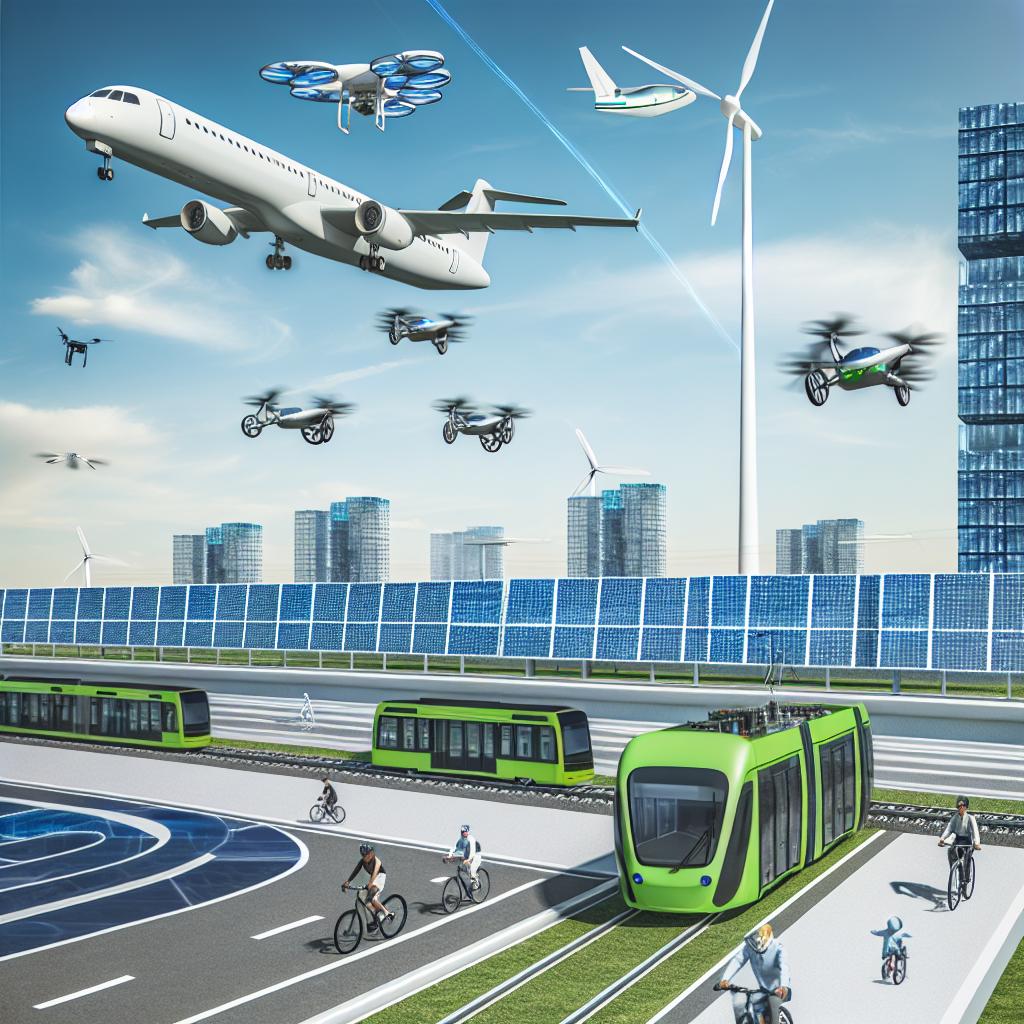
Introduction
In recent years, green energy has initiated transformative changes within the transportation industry. As global concerns about climate change and environmental sustainability intensify, there’s a growing demand for cleaner, more efficient modes of transport. Green energy offers promising solutions to these challenges, playing a crucial role in reducing carbon footprints and promoting sustainable mobility.
Climate change has become a pressing global issue, propelling governments, industries, and individuals to seek alternatives to traditional fossil fuels. The transportation sector, a significant contributor to greenhouse gas emissions, is at the forefront of this push towards sustainability. Transitioning to green energy forms not only addresses environmental concerns but also paves the way for innovative approaches to mobility that benefit society economically and eco-consciously.
Electric Vehicles
Electric vehicles (EVs) have emerged as a pivotal element in the green energy revolution within transportation. Unlike traditional gasoline-powered cars, EVs run on electricity stored in batteries, drastically reducing emissions. According to the International Energy Agency (IEA), the global electric car stock exceeded 10 million in 2020, indicating a steady rise in consumer adoption.
Battery Technology Advancements
Continuous advancements in battery technology have significantly boosted EV performance and affordability. Lithium-ion batteries, in particular, have witnessed notable enhancements in their capacity and charging speed. These improvements have resulted in increased driving ranges and reduced charging times, making EVs more practical for everyday use. This progress is critical in encouraging the mass adoption of electric vehicles, as consumers demand transportation solutions that align with both their environmental ethos and practical needs.
Battery technology continues to evolve, with research focusing on developing even more efficient, longer-lasting batteries, including solid-state batteries that promise enhanced safety and performance. These innovations are set to make EVs an even more attractive option for environmentally-conscious consumers.
Hydrogen Fuel Cells
Hydrogen fuel cell vehicles represent another promising green energy technology in transportation. Unlike electric vehicles, these vehicles utilize hydrogen gas to power an electric motor. The primary advantage of hydrogen fuel cells is their quick refueling time and substantial range, comparable to conventional vehicles. This makes them particularly appealing for longer journeys and commercial applications, where downtime and range limitations are critical concerns.
Infrastructure Development
The development of hydrogen infrastructure, essential for widespread adoption, is progressing steadily. Several countries are investing heavily in hydrogen refueling stations, with increased government funding and partnerships aiming to boost the availability of hydrogen as a viable fuel source. The expansion of this infrastructure is crucial for enhancing consumer confidence in hydrogen technology and facilitating its broader integration into the transportation network.
Furthermore, initiatives to produce hydrogen sustainably, such as green hydrogen from renewable energy sources, are gaining momentum. This approach ensures that hydrogen fuel cell technology contributes to a comprehensive and sustainable energy ecosystem.
Sustainable Public Transportation
Public transportation is also experiencing a green energy transformation. Electric buses, trams, and trains are becoming more prevalent due to their environmental benefits and efficiency. These modes of transport contribute substantially to reducing urban pollution levels and enhancing the overall public transport experience for commuters.
Urban Impact
Cities worldwide are adopting sustainable public transport systems to combat congestion and pollution. By integrating electric buses and trams into their networks, urban areas are witnessing reduced greenhouse gas emissions and improved air quality. This transition not only aligns with environmental goals but also enhances the quality of urban life, making cities more livable and sustainable for future generations.
Moreover, these sustainable transit solutions often come with additional technological advancements such as real-time tracking, improved energy efficiency, and user-friendly interfaces, all of which improve the transit experience and encourage more individuals to choose public transportation over personal vehicles.
Challenges and Future Prospects
Despite the promising advancements, the transition to green energy in transportation faces several challenges. Infrastructure limitations, high initial costs, and consumer habits can decelerate progress. However, ongoing research, policy support, and technological innovations are paving the way for a more sustainable future.
Collaboration and Innovation
The interplay between government policies, private investments, and technological advancements is crucial for the continued evolution of green transport solutions. Collaborative efforts are needed to address infrastructure gaps and promote research that enhances the efficiency and affordability of green technologies. Industry stakeholders must work together to create favorable environments for innovation and adaptation, supporting policies that incentivize sustainable practices and new inventions.
Moreover, consumer education plays a vital role in shifting public perspective and habits, fostering a culture that values sustainability and recognizes the benefits of green energy transition in transportation.
Conclusion
The role of green energy in revolutionizing the transportation industry is undeniable. As technological advancements continue to make sustainable transport options more viable and attractive, the industry is poised for a substantial transformation. By supporting this shift, stakeholders can contribute to a cleaner, more efficient, and sustainable future for transportation worldwide.
Embracing green energy not only addresses pressing environmental issues but also offers economic opportunities and pathways to innovation. Seamless integration of green technologies into transportation systems is essential for achieving long-term sustainability goals and creating a resilient future capable of adapting to the evolving demands of both the environment and society. As the transition continues to unfold, it serves as a testament to the potential of human ingenuity in addressing complex global challenges.